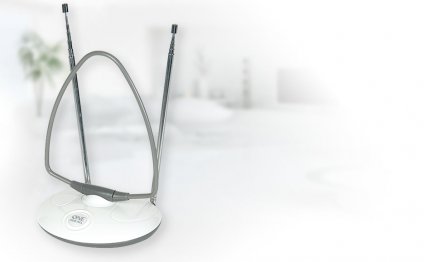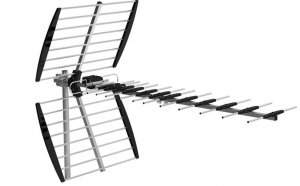
UHF or VHF antenna for digital TV
 The terms very-high-frequency and Ultra High Frequency explain distinct areas of the electromagnetic waveband utilized for radio and television broadcasts. The main difference between them is UHF works on a lot higher frequencies than VHF. If you’re likely to get a TV antenna, you’ll generally require equipment that works well on both UHF and VHF wavebands to view all in your area offered over-the-air digital-television programs.
The terms very-high-frequency and Ultra High Frequency explain distinct areas of the electromagnetic waveband utilized for radio and television broadcasts. The main difference between them is UHF works on a lot higher frequencies than VHF. If you’re likely to get a TV antenna, you’ll generally require equipment that works well on both UHF and VHF wavebands to view all in your area offered over-the-air digital-television programs.
Background and Channel Allocation
Whenever regular TV broadcasts were only available in the U.S. in late 1920s, the Federal Communications Commission allocated 12 networks into the VHF band for television transmissions. But television broadcasting expanded quickly after World War II and also the FCC developed more capacity for broadcasters by allocating the additional channels into the UHF waveband. A number of the original stations were reassigned for other reasons and VHF TV indicators today broadcast on stations 2 to 13, while UHF TV indicators use the higher-frequency stations 14 to 51.
Reception
Many TV antennas are directional, which means you have to aim the antenna at TV transmitter to receive an indication that’s strong sufficient permanently viewing. UHF transmissions are far more directional than VHF transmissions, therefore UHF antennas generally need much more exact positioning than VHF-only antennas. VHF indicators additionally travel more from transmitter than UHF signals, making reception much easier at higher distances from the transmitter or perhaps in areas screened by mountains, high buildings or other obstacles. A plus of UHF reception usually it's more resistant to particular types disturbance than VHF.
The recommended TV antenna the Tucson, AZ marketplace is the Winegard hd8200u. It will work nicely throughout areas of Tucson. We additionally remind you that the power to obtain your neighborhood programs depends upon the installation website and distinct sight to your tv transmitters. Each website has its own characteristics and various antennas may be needed based upon the complexities associated with selected site. We advice using resources such as for instance Antenna internet to have a much better idea at exactly what may work very well for your installation.
Antenna Installation
Because VHF and UHF antennas make use of various frequencies, each antenna type is designed and constructed to receive the most suitable waveband. TV broadcasters in the us utilize both VHF and UHF frequencies to supply as numerous over-the-air networks as you can, so you’ll generally need a combined VHF/UHF antenna to get all digital programs. Look at your regional TV reception problems before purchasing a TV antenna. Use a free on the web television signal locator solution to obtain the optimal antenna kind for the neighborhood (links in sources.) Although small set-top antennas may work with strong signal places close to TV transmitters, we need an adequately aligned directional UHF/VHF antenna mounted within the loft or externally on a rooftop, wall surface or gable-end. Utilize a high-grade, digital-television coaxial cable to connect the antenna into the receiver equipment to reduce signal reduction.
RELATED VIDEO



Share this Post
Related posts
Outdoor Antennas for digital TV
New advancements in efficiency & dimensions. 1st brand new HD TV antennas optimized the post 2009 digital frequencies…
Read MoreIndoor Aerials for digital TV reception
Have you had it towards eyeballs with digital television? Gone is the comfort of the analog picture. Today, you are left…
Read More










